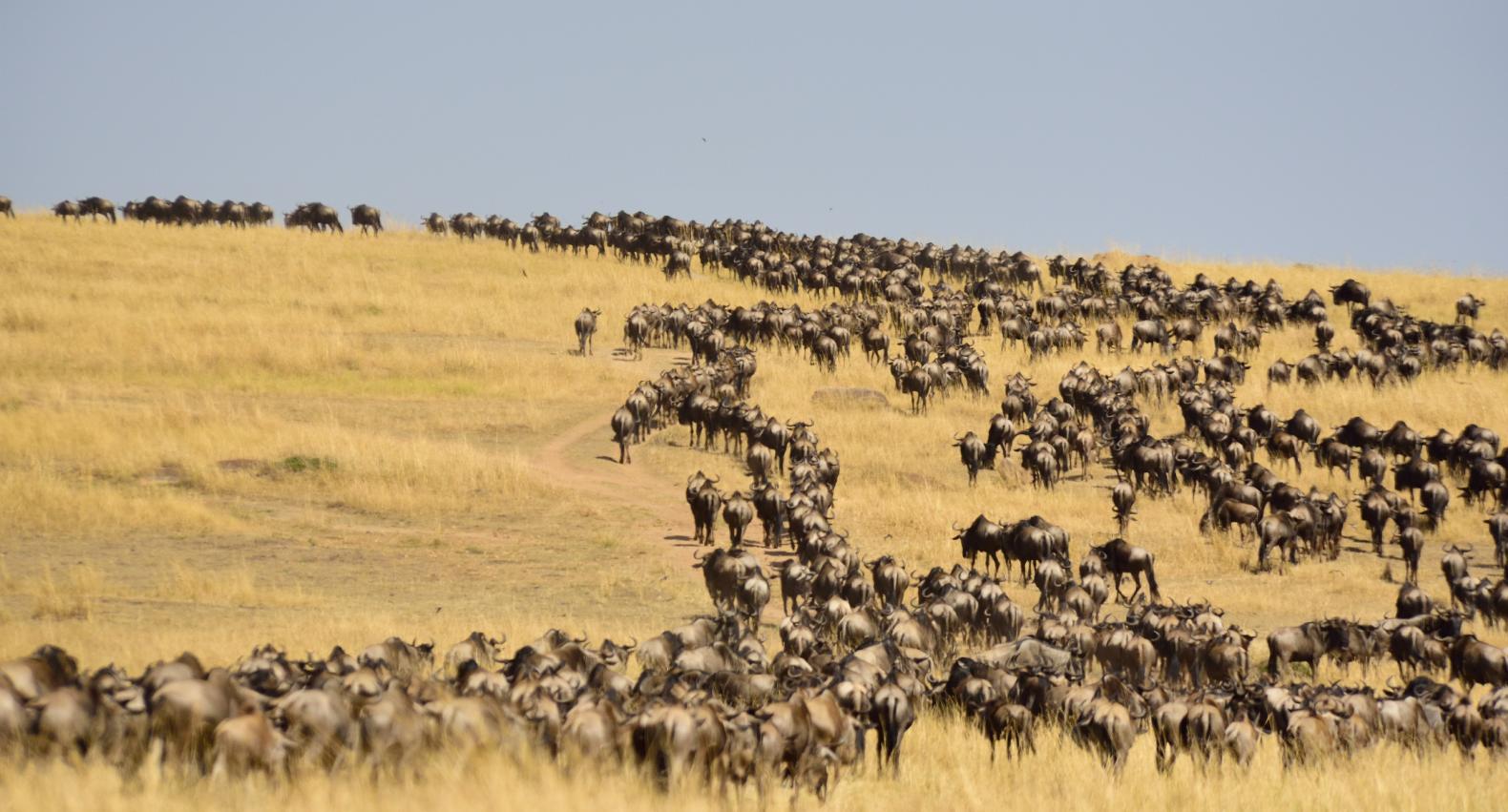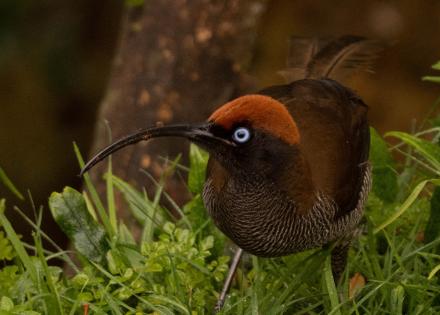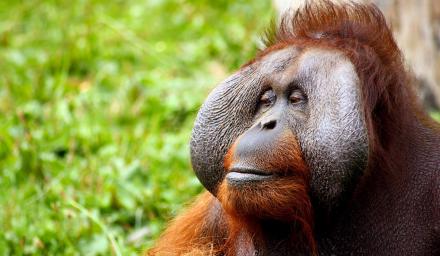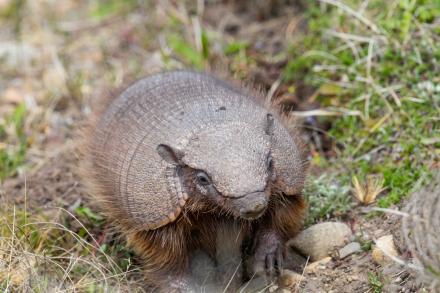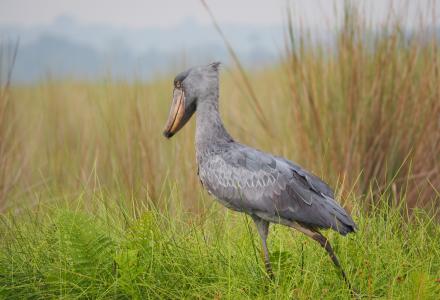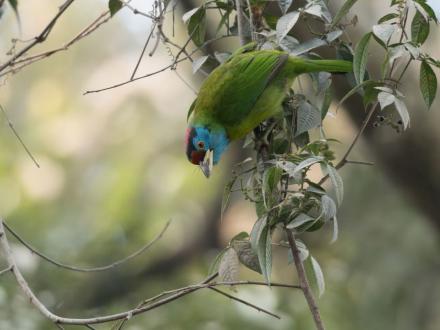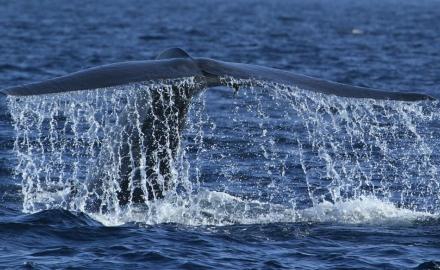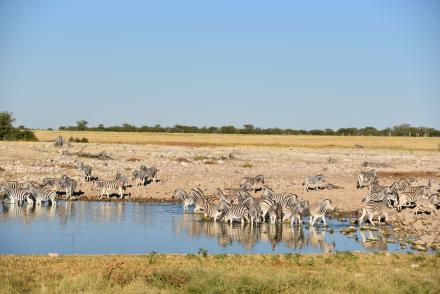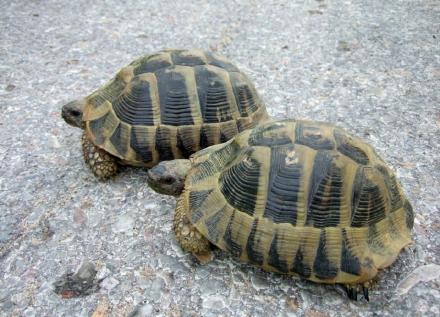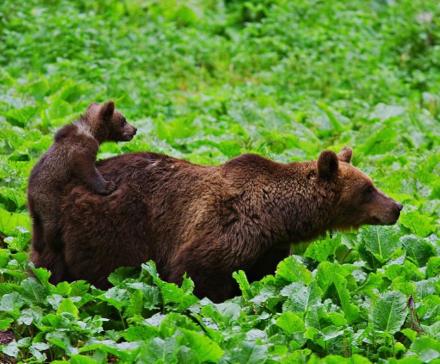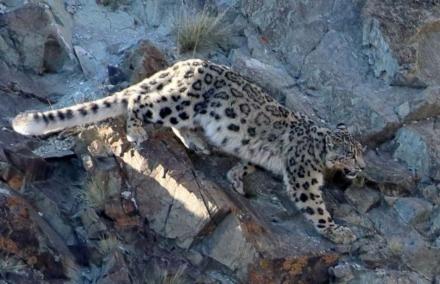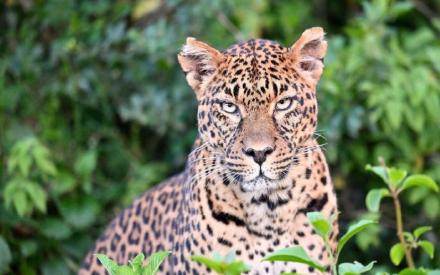Discover the best of Tanzania’s wildlife and birds. This tour is being offered in the dry season during the great migration of wildebeest in northern Tanzania.
This tour has been designed as a ‘best of Tanzania’s wildlife and birds’ and is being offered in the dry season at the best time to see the great migration of wildebeest in northern Tanzania. The tour is centred around the Serengeti where we will spend four nights, but will also include other iconic national parks which are world famous for their wildlife: Tarangire NP (large elephant herds), Mkomazi NP (Black Rhinoceros and African Wild Dog), Lake Maynara NP (tree climbing lions) and Arusha NP (black-and-white Colobus Monkeys). We will also visit Olduvai Gorge, one of the most important paleoanthropological sites in the world and Ngorongoro Crater, the largest intact caldera in the world. The arrangements have been made to maximise your safety and comfort, using good quality, comfortable accommodation throughout and travelling in open roofed 4X4 Toyota Landcruiser safari vehicles.
(Funds will go towards sustainability projects in Kenya and Tanzania.)
13 nights’ accommodation, transport for day and night tours in private open-roofed 4WD safari Toyota Landcruisers, with specialist licensed local guide with extensive big game, birding, nature interpretation and photography experience, site guides/wildlife rangers as outlined in the itinerary, all meals (B, L, D snacks and bottled water), species checklist, entry fees to National Parks, airport transfers on days of tour and guided walks as outlined in the itinerary and all internal taxes and charges.
International and domestic airfares, visas, alcoholic and non-alcoholic beverages, and expenses of a personal nature (travel and medical insurance, phone calls, laundry, tips etc), personal & incidental expenses and any additional activities not mentioned in the above itinerary.
Additional accommodation: additional nights at Mt Meru Game Lodge in Arusha can be booked before and after the tour (eg 23 July and 6 August) for US$270 and US$175 per single bed and breakfast.
Tour price: The above price is based upon a minimum group size of 6 people. If the tour does not achieve minimum numbers, a small supplement may be charged. We would always discuss this with you beforehand.
The itinerary: Whilst we aim to follow the itinerary as planned, please note that the itinerary provided should only be used as a guideline. Depending on individual trip circumstances, weather, and local information, the exact itinerary may not be strictly adhered to. The guides reserve the right to make changes to the itinerary as they see fit.
Remoteness: For much of this tour we will be in a wonderful yet remote part of the world. Some of the roads are unsealed and rough. If you have medical conditions or health concerns, it is important you make us aware of these in advance of this tour.
We strongly recommend you take out travel and health insurance for this and all our tours.
Download the itinerary brochure for the The Best of Tanzania's Birds and Wildlife tour.
Download (pdf 1.86 MB)There are terms and conditions relating to payments, cancellations, refunds, insurance and responsibility for our tours.
Here's what you'll see and do on the The Best of Tanzania's Birds and Wildlife tour.
On our arrival at Kilimanjaro airport, we will be met by our guide and transferred to our hotel (around 30 minutes of driving on good roads) where if time allows, we can explore the area around our lodge. We will meet for a welcome dinner tonight where we will discuss plans for our Tanzanian adventure.
Accommodation: Mount Meru Game Lodge, Arusha (ensuite rooms)
Meals included: D
We will spend today in Arusha National Park driving in some areas and walking in others. This park surrounds Mt Meru, a prominent volcano, and the highland forest is home to Black-and-white Colobus Monkeys and Ochre Bush Squirrels. Other mammals here include African Buffalo, Common Waterbuck and Maasai Giraffe. Many highland bird species can also be seen here including the Silvery-cheeked Hornbill, Scaly Francolin, African Black Duck, Striated Heron, Mountain Wagtail, Grey-olive Greenbul, Stripe-cheeked Greenbul, Crowned Eagle, Mountain Buzzard, African Wood-Owl, Black-throated Wattle-eye, Rameron Pigeon, Hamerkop, Montane White-eye, Giant Kingfisher, Brown-hooded Kingfisher, Peter’s Twinspot, Retz’s Helmetshrike, White-eared Barbet, Pallid Honeyguide, African Emerald Cuckoo, Taveta Weaver, Cinnamon-chested Bee-eater, Ruppell’s Robin-Chat and Hartlaub’s Turaco.
Accommodation: Mount Meru Game Lodge, Arusha (ensuite rooms) as for last night
Meals included: B L D
After some morning birding, we will leave Arusha and travel to Mkomazi National Park on the Kenyan border in the Kilimanjaro region. This amazing park is internationally recognised as a sanctuary for the Black Rhinoceros and African Wild Dog. Common Zebra, Maasai Giraffe, Savannah Elephant, Common Eland, and Common Impala are amongst 78 mammal species found here.
Birds are also plentiful (over 400 species recorded here), many of which also occur in the Tsavo Conservation Ecosystem of southern Kenya. Expected species include Black-faced Waxbill, Red-bellied Parrot, Pringle’s Puffback, Purple Roller, Golden-breasted Starling, White-headed Mousebird, Eastern Violet-backed Sunbird, Black-bellied Sunbird, Tsavo Sunbird, Red-and-yellow Barbet, Black-throated Barbet, Pink-breasted Lark, Northern Brownbul, Dodson’s Bulbul, Red-fronted Warbler, Grey Wren-Warbler, Somali Crombec, Tiny Cisticola, Scaly Chatterer, Bare-eyed Thrush, Pygmy Batis, Mosque Swallow, Yellow-spotted Petronia, Taveta Weaver, Southern Grosbeak-Canary, White-bellied Canary, Somali Bunting, Von der decken’s Hornbill, Mouse-colored Penduline-Tit and Northern Grey Tit.
Accommodation: Mkomazi View Camp (ensuite tents) for two nights
Meals included: B L D each day
We will leave early today and head straight to Tarangire National Park, which is world famous for its populations of Elephants and Baobab Trees. Almost 3,000km2 of protected area is a haven for plains wildlife that inhabit the surrounding Maasai steppe. The park was established to protect the Tarangire River and act as a dry season refuge for the wildlife of the area. We will explore this area and get up close and personal with herds of elephant and other plains wildlife as we travel along the scenically beautiful Tarangire River.
Other mammals we expect to see here include African Lion, Ugogo Dik-dik, Banded Mongoose, Cape Buffalo and Cheetah. The local Acacia woodland is very graceful and full of birds. Highlight birds include Yellow-collared Lovebird, Woodland Kingfisher, Double-banded Courser, White-headed Buffalo-Weaver, Coqui Francolin, Pygmy Falcon, Brown Snake Eagle, Black Cuckoo, Great Spotted Cuckoo, Great Painted Snipe, Mottled Spinetail, Southern Ground Hornbill, Meyer’s Parrot, Bearded Woodpecker, Southern Red Bishop, Knob-billed Duck, Banded Parisoma, Miombo Wren-warbler, Green Woodhoopoe, Brubru, Magpie Shrike, Red and Yellow Barbet, Rufous-tailed Weaver and Ashy Starling.
We will take a night game drive one evening.
Accommodation: Tarangire Safari Lodge (ensuite tents) for two nights
Meals included: B L D each day
This morning we will leave early and travel to nearby Lake Manyara, a pristine soda lake in the Rift Valley. Lake Manyara National Park offers a wilderness experience in diverse habitats, from its soda lake to dense woodlands and steep mountainsides. Apart from a spectacular setting, the park is famous for its tree-climbing lions, huge troops of Olive Baboons and the vast elephant herds it was established to protect. The shores of the lake attract more than 400 species of birds, many of them waterfowl or migrants and include vast flocks of Lesser and Greater Flamingos. Large herds of buffalo, occasional cheetah, Masai Giraffe and Impala roam the lake shores and the forested valley slopes. Vervet Monkey and Manyara Monkey can also be seen here. Lake Manyara protects the largest ground-water forest in the world while the Maji Moto hot springs are an interesting geological feature.
We will drive through the park from the south to the north throughout the day. Birds we should see here include Grey-olive Greenbul, Crowned Eagle, Purple-crested Turaco, Crested Guineafowl, Bare-faced Go-away-bird, Blue-capped Cordon-bleu, Grey Kestrel, Martial Eagle, Yellow-billed Stork, Silvery-cheeked Hornbill, Common Moorhen, Abyssinian Scimitarbill, Slate-coloured Boubou, Goliath Heron, Superb Starling, Hildebrandt’s Starling and Great White Pelican.
We will then drive to the highlands of Karatu late this afternoon and take a night game drive this evening.
Accommodation: Bouganvillea Safari Lodge, Karatu (ensuite rooms)
Meals included: B L D
This morning we will travel along the rim of the famous Ngorongoro Crater to Serengeti National Park. We will spend 4 nights enjoying the beautiful birds and big game of the mighty Serengeti, splitting our time between Northern Serengeti and Central Serengeti, to maximise habitats and wildlife sightings. This park is one of the top conservation areas in the entire African continent and has been made famous in many books and films. The name Serengeti comes from the Maasai word for 'endless plains' and in every direction you can see only flat grasslands dotted with wildlife. It is here, on the short grass plains of the Serengeti, where the wildebeest of the great migration choose to give birth. The mass of herbivores and their young attract the predators from all over the central and southern Serengeti.
Lions and Hyena from the central Serengeti travel tens of kilometres to spend their time here during this season, while the nomadic cheetahs follow the herds to this area; African hunting dogs that spend the dry season in the adjacent woodlands can often be seen hunting on the plains. As a result, there is wonderful opportunities for some spectacular predator action.
We will enjoy game drives as we transect this vast savannah and visit local wetlands and scrublands to boost our species lists. Other mammals we can expect to see here include the Savannah Elephant, Serval, Caracal, Naivasha Dik-dik, Maasai Giraffe, African Lion, African Buffalo, Defassa Waterbuck, Common Hippo, Leopard, Thomson’s Gazelle, Topi and Common Zebra. Bird highlights include Fischer’s Lovebird, Black Coucal, Steel Blue Whydah, Usambiro Barbet, Swahili Sparrow, Rufous Chatterer, Karamoja Apalis, Black-necked Weaver, African Scops-Owl, Temminck’s Courser, Black-winged Lapwing, Caspian Plover, Zitting Cisticola, White-tailed Lark, Tanzania Red-billed Hornbill, Bare-faced Go-away-bird, Northern White-crowned Shrike, Grey-crested Helmet-shrike, Magpie Shrike, Silverbird, Black-lored Babbler, Cape Teal, Saddle-billed Stork, Blacksmith Lapwing and Grey-breasted Spurfowl.
Accommodation: Mara River Gnu Migration Camp (northern Serengeti) and Thorn Tree Camp (Central Serengeti) ensuite safari tents for four nights total
Meals included: B L D each day
Today we will travel to Olduvai Gorge, one of the most important paleoanthropological sites in the world. Located on the eastern Serengeti Plain within the boundaries of the Ngorongoro Conservation Area, this area was made famous by archaeologists Mary and Louis Leakey and provides the most continuous known record of human evolution during the last 2 million years and the longest known archaeological record of the development of stone-tool industries. Famous hominid discoveries here include ‘Nutcracker Man’, Zinjanthropus (now Paranthropus) boisei, Homo habilis and Homo erectus. We will learn of the archaeological work going on at the site in a very interactive way.
We will then continue wildlife viewing in the highland forest enroute to our lodge. We will enjoy spectacular views of the mighty Ngorongoro Crater from our lodge and spend some time birding there too. Expected species include Hunter’s Cisticola, Golden-winged Sunbird, Eastern Double-collared Sunbird, Black-fronted Bush-Shrike, Bar-throated Apalis, Cinnamon Bracken Warbler, Brown Woodland Warbler, Southern Citril, Thick-billed Seedeater, Brown Parisoma, African Olive Pigeon, Brown-backed Woodpecker, Waller’s Starling, White-naped Raven, White-headed Barbet and Schalow’s Turaco.
Accommodation: Ngorongoro Serena Lodge (ensuite room)
Meals included: B L D
Early this morning we will descend the steep wall of the world’s largest inactive and intact volcanic caldera, Ngorongoro Crater, which is one of the wonders of Africa. Located at about 2000m (over 6,550 ft) above sea level, this this crater is about 600m (almost 2,000ft) deep and a pristine natural forest, full of beautiful indigenous trees and Euphorbia succulents is nestled within it. Ngorongoro is thought to have formed around 2.5 million years ago from a large active volcano whose cone collapsed inward after a major eruption, leaving the vast, unbroken caldera as its main remnant.
Here, we find Africa's densest concentration of wildlife, attracted to the constant water present on the 100-square-mile crater floor of open grassland. Some 25,000 animals reside in the crater year-round, a veritable Eden of creatures thriving within an ecosystem of abundant resources. Among a multitude of species, we will look for Common Zebra, wildebeest, Grant’s Gazelle and Eland, and the lion, Cheetah, and Hyena that prey upon them. We're also likely to see Savannah Elephant, African Buffalo and Common Hippopotamus, and if we are exceptionally fortunate, we may spot an endangered Black Rhinoceros. Flocks of pink flamingos cover the soda lakes, while large land birds like ostrich and Kori Bustard roam the grassy plain. Other birds we may encounter today include Hildebrandt’s Francolin, Shelley’s Francolin, Grey Crowned Crane, Fan-tailed Widowbird, Pectoral-patch Cisticola, Lyne’s Cisticola, Pied Avocet, Yellow-throated Sandgrouse, Black-bellied Bustard, Kori Bustard, Secretarybird, Rosy-breasted Longclaw, Lesser Flamingo, Greater Flamingo, Chestnut-banded Plover and Rufous-tailed Weaver.
We will spend a full day here before returning to our accommodation.
Accommodation: Ngorongoro Serena Lodge as for last night
Meals included: B L D
This morning we will have a relaxed morning at the Ngorongoro rim, adding some more sightings here, before cruising slowly back towards the town of Karatu. On the way, we shall have options to visit local crafts shops. In the afternoon, we shall proceed to Arusha and then transfer to Kilimanjaro airport for our flights home. Please don’t book flights that depart before 18:00.
Accommodation: none
Meals included: B L
